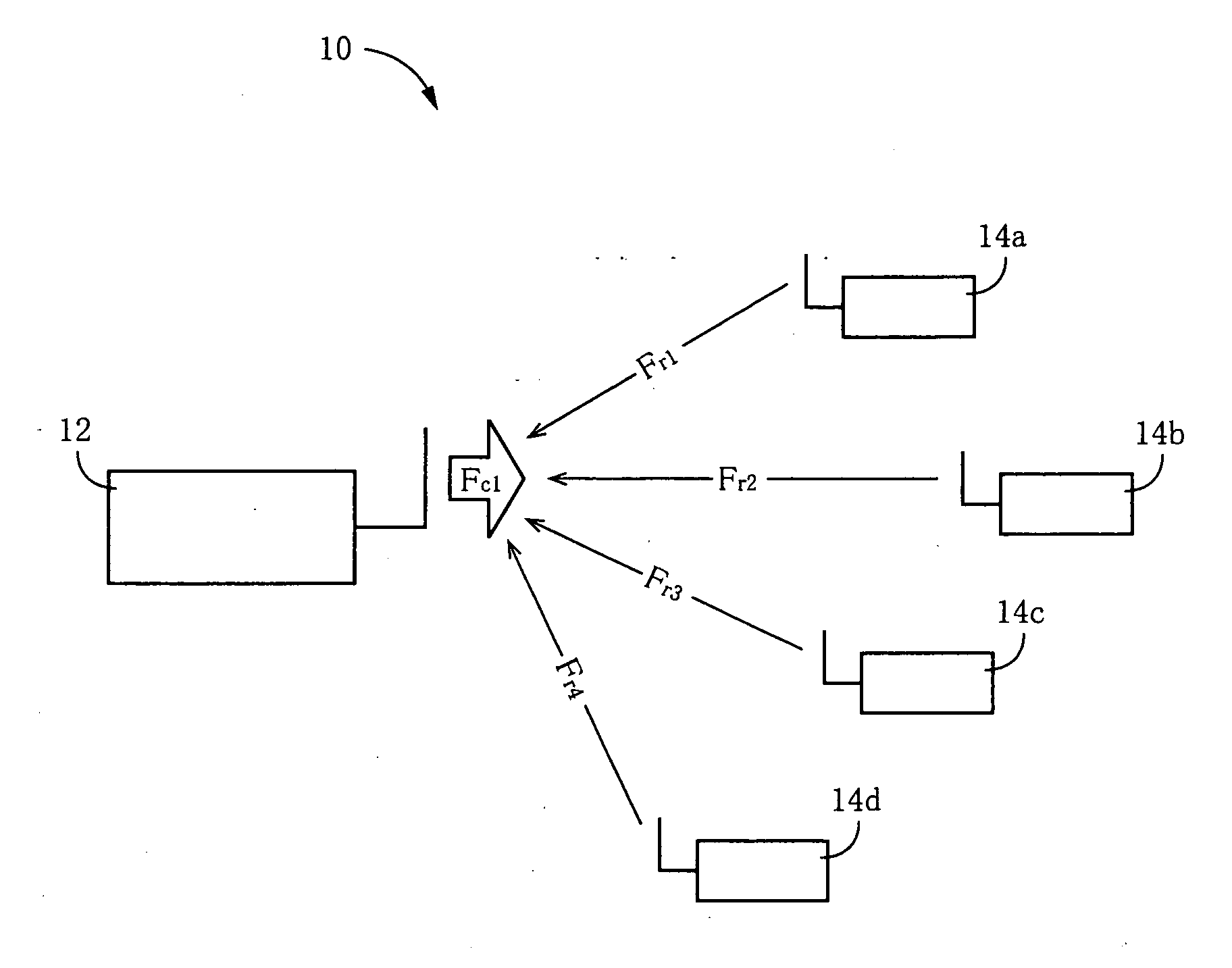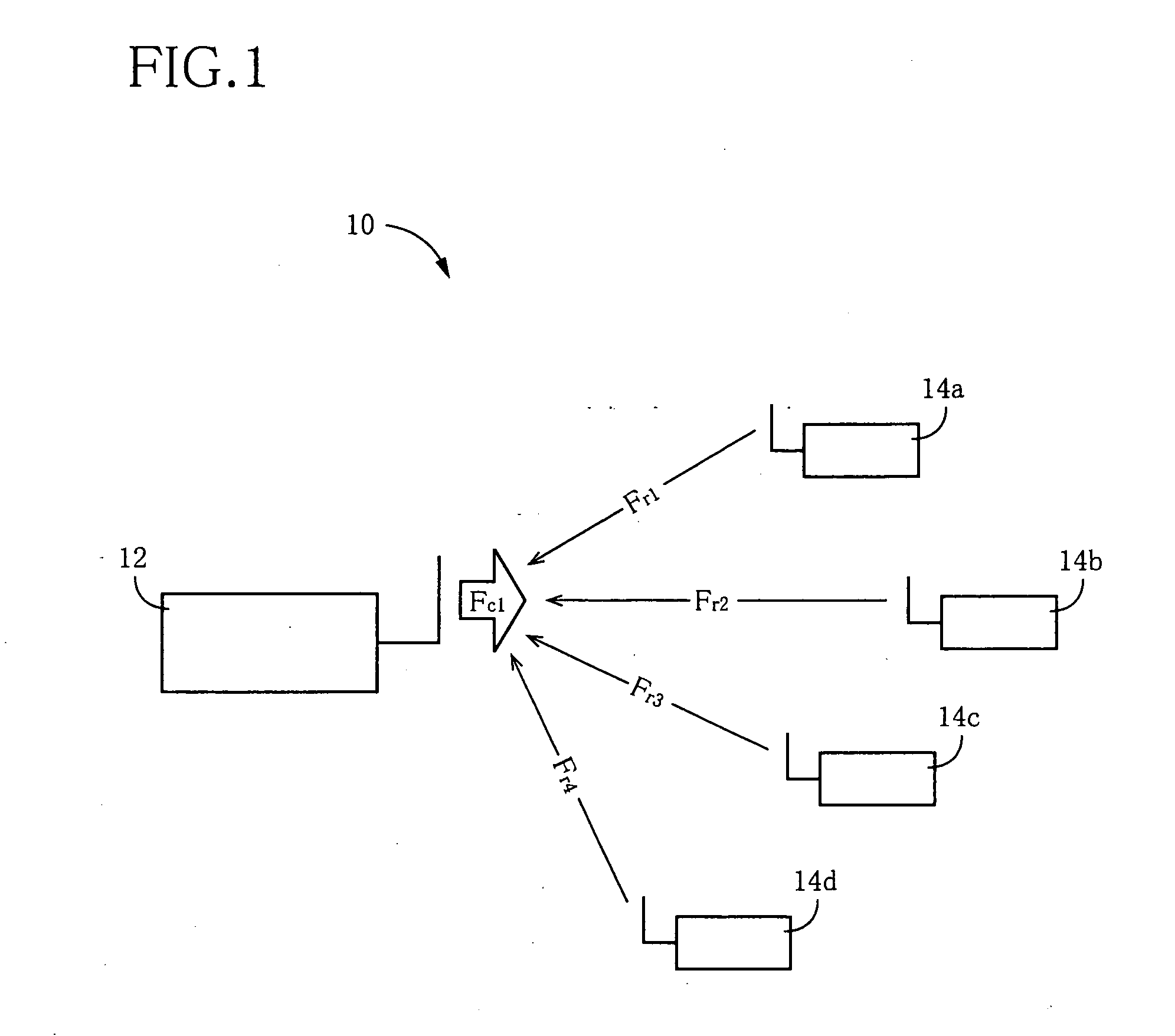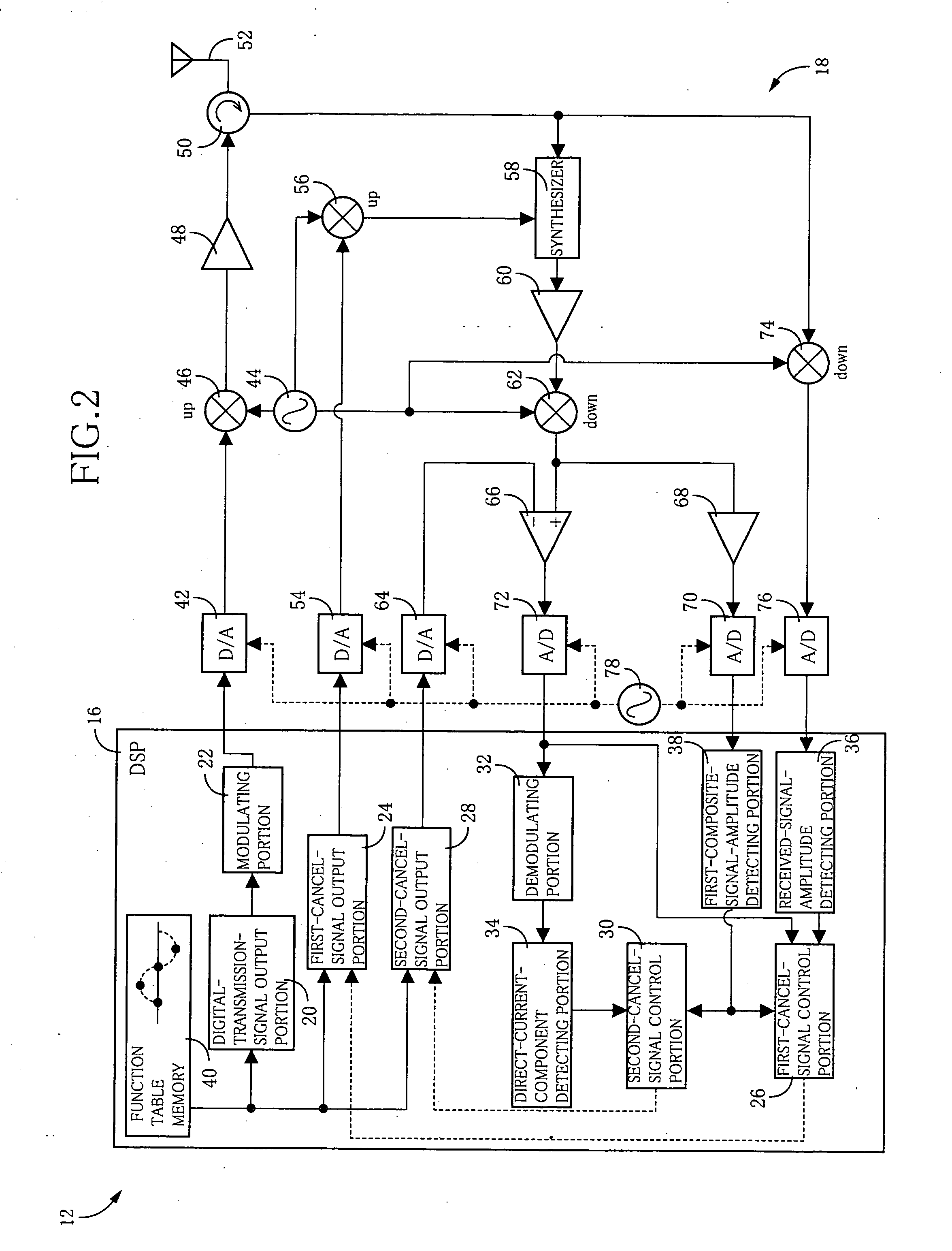RFID-tag communication device
a radiofrequency identification and communication device technology, applied in the direction of instruments, near-field systems using receivers, burglar alarm mechanical actuation, etc., can solve the problems of difficult control of the phase shifter, the risk of insufficiency of the signal-to-noise ratio of the known rfid-tag communication device, and the cost of a comparatively expensive large phase shifter. , to achieve the effect of simplifying the control of the first cancel signal, simplifying th
- Summary
- Abstract
- Description
- Claims
- Application Information
AI Technical Summary
Benefits of technology
Problems solved by technology
Method used
Image
Examples
embodiment 1
[0110] Reference is first made to FIG. 1 showing an RFID-tag communication system 10 to which the present invention is applicable and which includes an RFID-tag communication device 12 constructed according to a first embodiment of this invention, and a plurality of radio-frequency identification tags (hereinafter abbreviated as “RFID tags”) 14, more specifically, four RFID tags 14a, 14b, 14c and 14d. In the present RFID-tag communication system 10, the RFID-tag communication device 12 serves as an interrogator, while the RFID tags 14 serve as transponders. Namely, the RFID-tag communication device 12 is arranged to transmit a transmission signal in the form of a carrier wave Fc1, while the RFID tags 14a, 14b, 14c, 14d are arranged to receive the carrier wave Fc1, modulate the received carrier wave Fc1 into reply signals in the form of reflected waves Fr1, Fr2, Fr3 and Fr4 (hereinafter collectively referred to as “reflected waves Frf) on the basis of suitable information, and transm...
embodiment 2
[0152] Referring to FIG. 22 showing an electrical arrangement of an RFID-tag communication device 92 constructed according to the second embodiment of this invention, the transmitter / receiver circuit 18 of this RFID-tag communication device 92 includes an RSSI (received signal strength indicator) 94 and an amplitude-signal A / D converting portion 96. The RSSI 94 is arranged to detect the amplitude AR of the received signal received from the transmission / reception separator 50, and the amplitude-signal A / D converting portion 96 is arranged to convert an output of the RSSI 94 indicative of the amplitude AR of the received signal, into a digital signal to be applied to the first-cancel-signal control portion 26. In the present second embodiment, the amplitude AR of the received signal received through the antenna 52 is directly detected by the RSSI 94, and the signal indicative of the detected amplitude AR is converted by the amplitude-signal A / D converting portion 96 into the digital s...
embodiment 3
[0153] Referring to FIG. 23 showing an electrical arrangement of an RFID-tag communication device 98 constructed according to the third embodiment of this invention, the present communication device 98 does not include the function table 40, and includes a digital-transmission-signal output portion 100, a first-cancel-signal output portion 102, and a second-cancel-signal output portion 104 in place of the digital-transmission-signal output portion 20, first-cancel-signal output portion 24 and second-cancel-signal output portion 26. The output portions 100, 102, 104 are operable independently of each other, to generate digital signals in the form of sine-wave or cosine-wave signals, without using the function table 40 provided in the first embodiment. Reference is made to FIG. 24 showing an arrangement of each of the digital-transmission-signal output portion 100, first-cancel-signal output portion 102 and second-cancel-signal output portion 104. Each of these output portions 100, 10...
PUM
 Login to View More
Login to View More Abstract
Description
Claims
Application Information
 Login to View More
Login to View More - R&D
- Intellectual Property
- Life Sciences
- Materials
- Tech Scout
- Unparalleled Data Quality
- Higher Quality Content
- 60% Fewer Hallucinations
Browse by: Latest US Patents, China's latest patents, Technical Efficacy Thesaurus, Application Domain, Technology Topic, Popular Technical Reports.
© 2025 PatSnap. All rights reserved.Legal|Privacy policy|Modern Slavery Act Transparency Statement|Sitemap|About US| Contact US: help@patsnap.com



